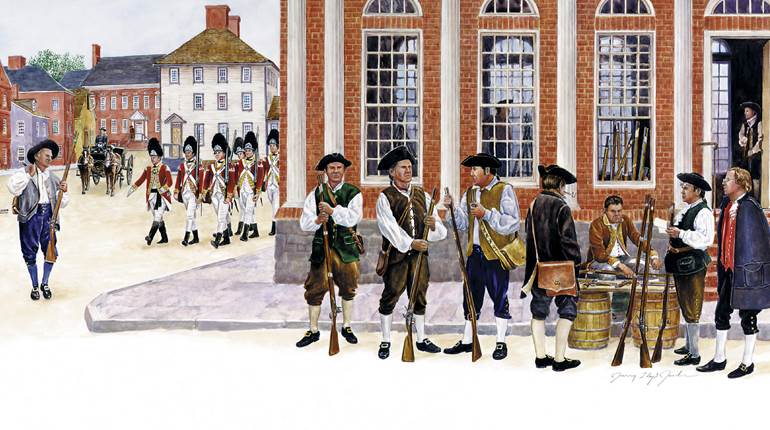
According to a poll by the Media Insight Project, only 6 percent of Americans have faith in the news media. Among readers of American Rifleman, that figure is likely even lower. We’ve learned that, in all probability, anything we read or hear about guns will be either biased or factually wrong, or both. How come?
Reason One:
Lack of accountability. When I broke into the magazine business in 1964, I had some basic rules drummed into my crew-cut head. If you edited a piece, you were responsible for everything in it: spelling, punctuation, facts, everything—especially facts.
If you were wrong, God help you. The least you would get was a serious public tongue-lashing. As a result of this process I can tell you to this day that it’s the Smithsonian Institution, not Institute, and that “prairie” is not spelled “prarie.” A cousin of mine, who worked at one of the big New York City daily newspapers, had exactly the same experience.
This seems to have gone by the wayside. A small example: On Jan. 5, in The New York Times, there was an article on “ballistics vests.” What’s wrong with this? It’s “ballistic vests.” “Ballistics” is the science of projectile behavior and is a noun, while “ballistic” means relating to ballistics, and is an adjective. No one at The Times appears to know the difference. If I had made that mistake, or my cousin had, we would have been screamed at for 10 minutes with no regard for our “safe space.”
Reason Two:
People in the same profession tend to think alike. Among the news media, the collective wisdom regarding guns runs as follows:
1. They believe guns are inherently evil.
2. They think gun owners are, at the least, disturbed and, at the worst, dangerous.
3. They believe the National Rifle Association has, since its founding in 1871, done nothing worthwhile, has never been right about anything and is nothing more than a shill for the firearm industry.
4. They believe the Second Amendment has no relevance in today’s United States, and if only we could institute reasonable gun controls there would be no more gun violence.
5. It is their opinion that guns in the home lead only to tragedy, and self-protection is a myth.
Now, let’s assume that you’re a student in journalism school, and the subject of guns comes up, and you venture the fact that you own guns, and use them, and that your family has always had guns in the home, and that there’s never been an accident, and that you don’t even know of any accidents. How do you think that statement would be received?
Most likely, you would shortly receive a summons from the dean of students and probably the college psychiatrist to come in and chat, not that there’s anything wrong, you understand, but … .
Or let’s say that you work in a newsroom and the subject of guns used in self-defense comes up and you point out that, every month, you can cite half a dozen or more cases in “The Armed Citizen” where someone who had a gun prevented a crime or saved themselves or someone else and, in many instances, did it without firing a shot. Imagine the look you’re going to get from the news director. It will not be the kind of look that says your career will prosper here.
Reason Three:
Good old-fashioned ignorance. I got my first exposure to this in the mid-1960s when the armed forces began issuing M16s. The 5.56 mm bullets, we were told by reporters, created terrible wounds because “they tumbled through the air and hit people like little buzz saws.”
“Golly gee,” I said, (or words to that effect), “that’s just not possible. Anything that tumbles through the air isn’t going to go where it’s aimed. Just look at a football that doesn’t spiral.”
But there it was, and there was more to come.
When the first Glocks were imported they were denounced as “all plastic,” and therefore undetectable at airports. The media, knowing nothing of how guns work, and not understanding such concepts as mass and resistance, printed the nonsense verbatim.
When the great “cop-killer-bullet” brouhaha erupted, the media also neglected to check the facts. If they had, they would have learned that Teflon-coated ammunition was very expensive, made in limited amounts, sold to police agencies only and had never been used to kill a cop.
Journalists are ignorant about guns because being knowledgeable about guns requires at least a smattering of understanding regarding physics, how machinery works, metallurgy and so on. It also involves a considerable technical vocabulary. The average reporter, reading American Rifleman, would not understand most of it, any more than he or she would understand Road & Track or the Isothermal Transformation Quarterly Progress Report.
And let us not forget our old friend, that statistic which claims that “80 [or 90, or any number you please] percent of Americans favor universal background checks.” Friends, I’ve been around a long time, and my experience is that when 80 or 90 percent of us want something, we get it. But by diddling with where and how you ask the questions, you can get a survey to say anything you want it to.
Reason Four:
Journalists, some of them, are flat-out terrified of firearms. I first ran into this in 1967, when Smith & Wesson came out with the Model 76 submachine gun, a modification of the Swedish Carl Gustav. To display its wonderfulness, S&W found an underground range in Manhattan that would let the company stage a demonstration, and it invited the press, among which was myself.
At the end of his pep talk on how the Model 76 was going to revolutionize small arms, the S&W spokesman laid the gun on the counter and asked if anyone in the press would like to fire a few bursts. If he had dropped a saw-scaled viper on the counter and asked if anyone wanted to give it a kiss on the head the reaction would have been about the same—sheer horror.
I was the only one who took up the offer. Free ammunition, a full-automatic gun—how could any decent person refuse? I seem to recall that as the news conference broke up, my colleagues were looking at me quite oddly.
Needless to say, a person who is terrified of guns is not going to do an impartial job of reporting on them.
Conclusion:
And so, you ask, is it going to get better?
No.
The graduates our colleges are churning out are, with far too few exceptions, breathtakingly ignorant, and more closed-minded than ever before. This does not bode well for the media, or for anyone else, gun owner or not.
But what can we do?
Tell the truth. As George Orwell said, “In a time of universal deceit, telling the truth is a revolutionary act.” So be it. Long live the revolution.
David E. Petzal is a recognized outdoor writer who joined NRA in 1964 and has been a Benefactor member since 1979.





































